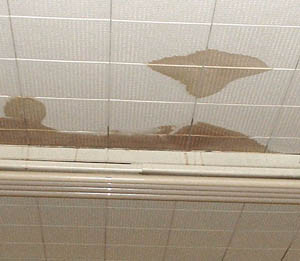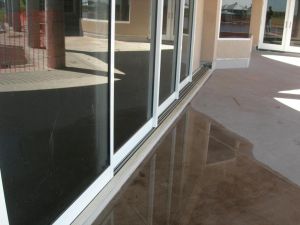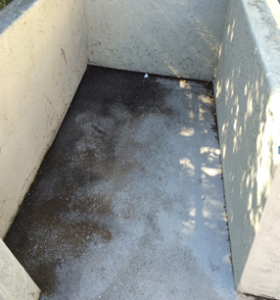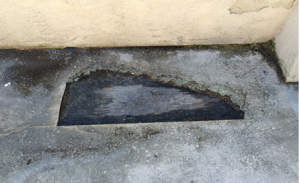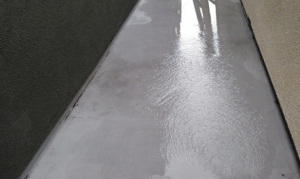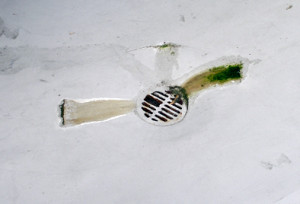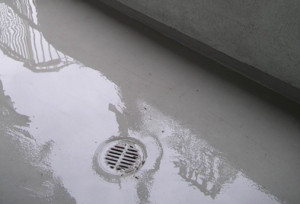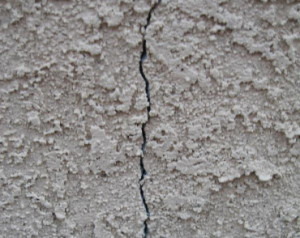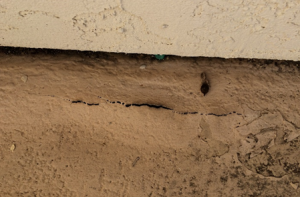Rain tonight…what to look for tomorrow.
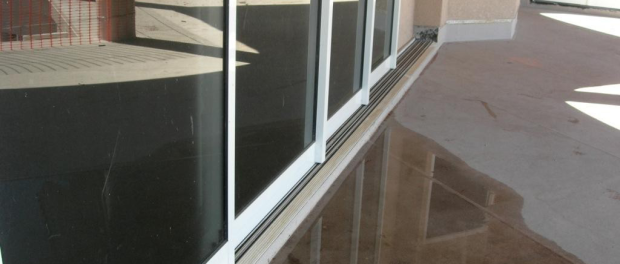 Water intrusion where deck meets sliding door: improper sloping, improper waterproofing installation.
Water intrusion where deck meets sliding door: improper sloping, improper waterproofing installation.
Of course, water leaking into a living area is a serious issue. We encourage homeowners and community managers to perform deck inspections every 2-3 years before the rainy season, to catch potential leaks before they occur.
Aside from obvious leaking, the day after a rain may be the best time to spot signs of potential leaks, or active leaks that do not affect living space.
Here’s a list of the most obvious (and important) things to look for.
1. Water intrusion from a deck above or adjacent to living areas:
Immediately contacting a waterproofing specialist to locate and seal off the leak. Contact a dry-out company to place high-capacity moisture removal devices to prevent moisture from turning into mold. Schedule waterproofing company to repair damaged deck as soon as possible; temporary patches are only made to hold off leaking until the rain subsides, they are not permanent.
2. Water leaking through deck not above living space:
These can be the most serious leaks. Because the leaks do not occur over living space, they are not immediately obvious to residents. Therefore, water continually seeping beneath the waterproof surface can cause serious structural rot and mold. Since decks support the weight of people walking, this can lead to injuries and even death (in addition to the high costs of structural repair). Remember the Berkeley deck collapse last year? That was a deck with water intrusion issues that no one noticed, since deck was not located above a living area.
If you see ponding on or directly below a deck, or water spots, cracks, or dripping water down the side of a deck, call a waterproofing specialist immediately. You may save tens of thousands of dollars in repair, and you may save a life.
3. Water ponding on decks and walkways:
Ponding refers to puddles of water. Like roofs, decks were not meant to hold water. Building code specifies that ponding deeper than a quarter coin laying face down for more than 24 hours is a water intrusion risk. Standing water can erode though the waterproofing membrane, saturating the supporting wood beneath. If you see ponding on walkways or decks, contact a waterproofing specialist for an inspection, as those are the areas you would want repaired before the next rains.
4. Water ponding around drains and gutters:
Faulty or clogged drains can ruin an otherwise perfect waterproof deck. The deck may divert water to the drain, but if the drain is cracked (leaking) or backing up (clogged), it will begin to rot the underlying wood structure.
Same thing for gutters…if they are clogged and overflowing, or if they are not installed or terminating at the right location, they can be sending water to an area where it is not being diverted properly. Any evidence of overflowing gutters, ponding near gutter terminations, ponding around drains, or cracked drains, should be inspected by a waterproofing expert immediately, and repaired before the next rain.
5. Cracks:
Any cracks in a deck or walkway, or where the deck or walkway meet the adjacent wall, mean that water is penetrating beneath the surface into the structural beams below. Cracks can be repaired inexpensively if you catch them in time, and are part of your routine maintenance (every 3 years). Allowing cracks to persist without repair can lead to serious water intrusion, mold an wood rot issues.
WICR Waterproofing and Decking has been specializing in waterproofing and decking, both new construction and deck repair, for over 35 years. We have offices in Orange County, Los Angeles, Palm Springs, and San Diego, to serve all of Southern California. Please feel free to call us for a free estimate at 888-429-2909, or visit us on the web at www.WICR.net.

